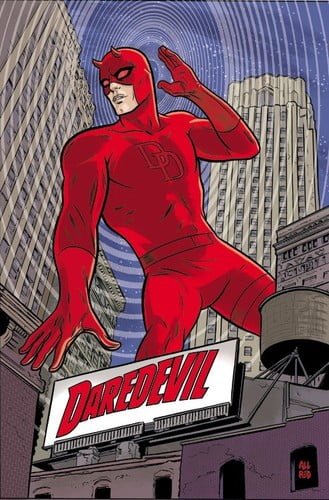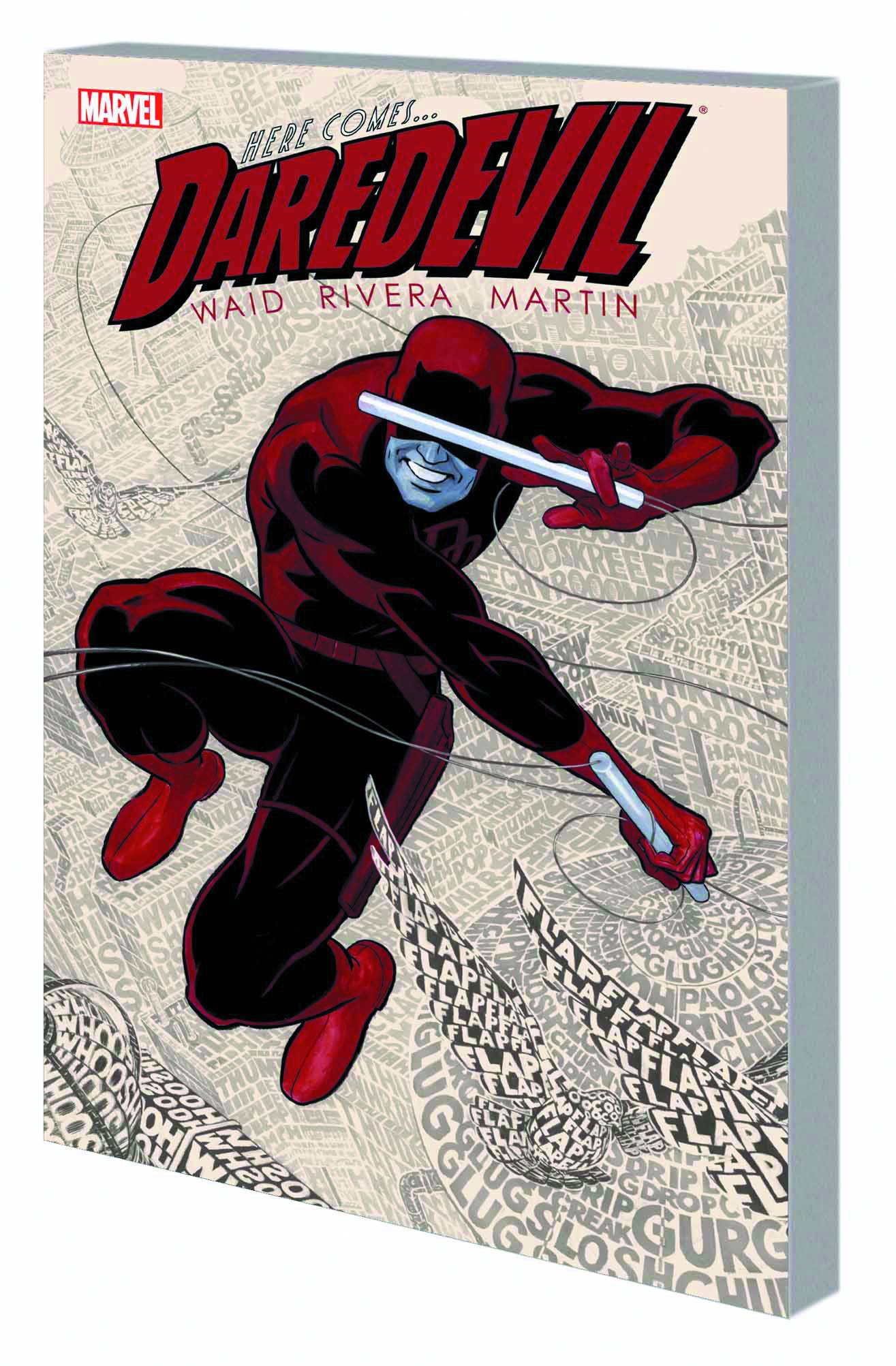

There’s also a crossover involving Spider-Man and Black Cat, elements of which make a whole lot more sense here in context than they did when forming part of the Spider-Man collection Flying Blind in isolation. In particular assorted crime cartels and terrorist organisations want it, and it complicates Daredevil’s life, and this extends into volume two. As the book progresses, a big picture begins to emerge as Daredevil acquires something that’s considerably prized by many people, most of them far from benign.

His alternative supplies an interesting twist on courtroom dramas. Waid emphasises that Matt Murdock is blind, and the artists conceived interesting visual ways to display how he perceives the world, using outlines or red on black, and he also sidelines Murdock’s civilian career as a lawyer in an inventive fashion. A feature in the back of the book details Rivera’s working process. There’s also something endearing about him having his pencils inked, very competently, by his father Joe.


It accompanies the storytelling, though, rather than swamping it, and results in some stunning art. Yet, it’s not as obvious as it first seems, and the opening three chapters are an excellent statement of intent.Īn equal partner is pencil artist Paolo Rivera, who brings a strong sense of graphic design to his pages, exemplified by the innovative cover to this book. Being blind, Daredevil is very dependent on his hearing, and Waid is the first to pit him against a stock Marvel villain who can mess with that. The reader is dragged along by the puzzling aspects of his stories, and Waid doesn’t disappoint with the revelations. Here, and during the course of the following two volumes, and indeed beyond into the next series, Waid’s primary writing strength is an ability to surprise. It’s rather belied by the gruesome occurrences later in the series – a disinterment, a friend presumed to have hanged themselves – but there is a lightness of presentation long absent. The publicity preceding the original comics in which these stories appeared made much of Mark Waid’s view of Daredevil considerably diminishing the bleak noir outlook that had sustained Daredevil since the mid-1970s.


 0 kommentar(er)
0 kommentar(er)
